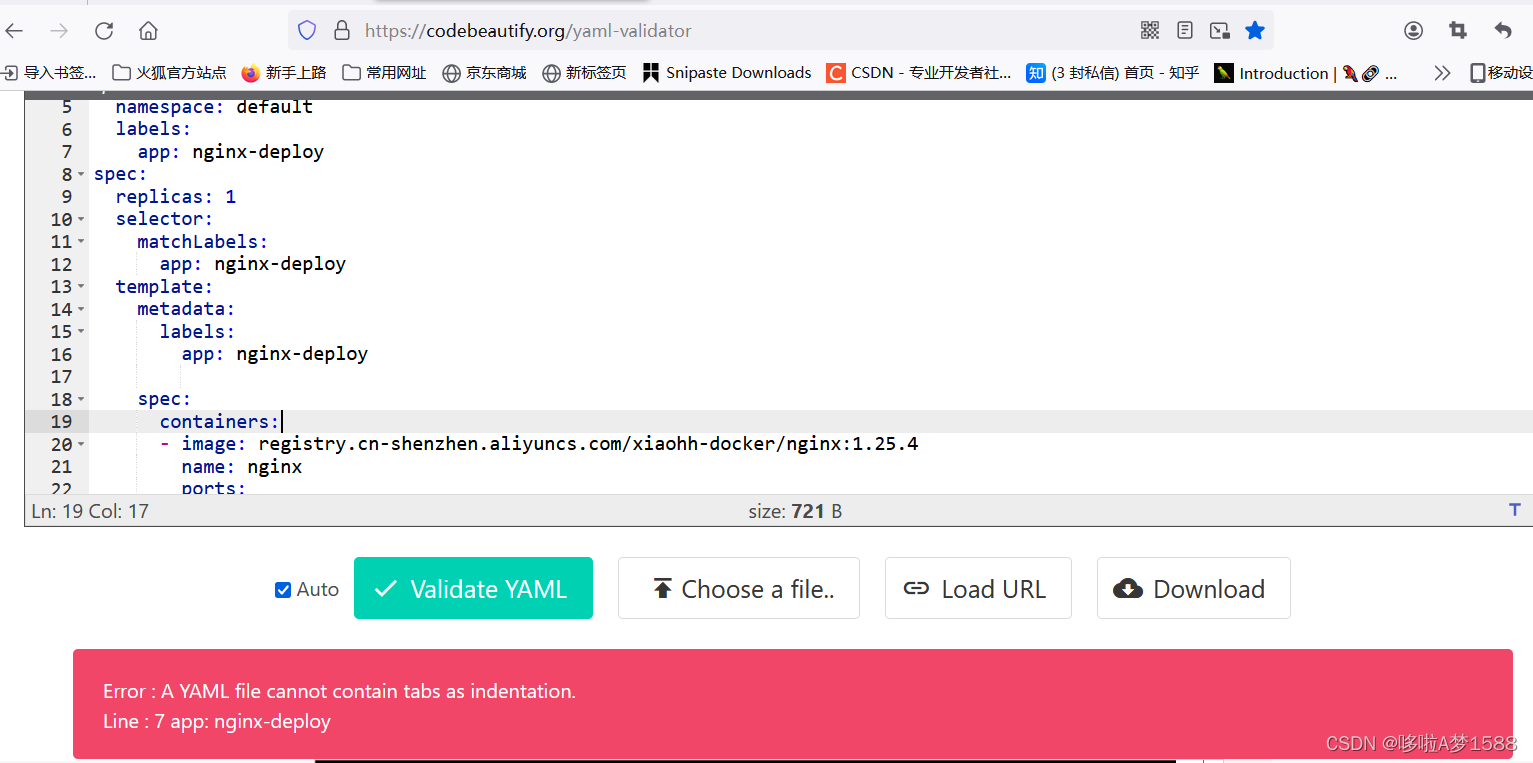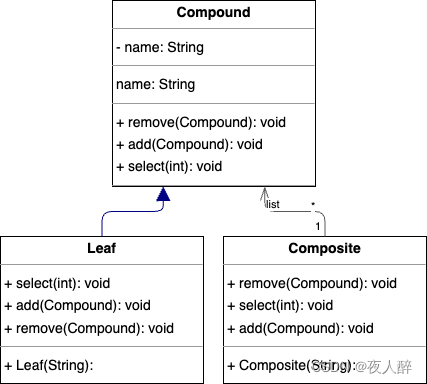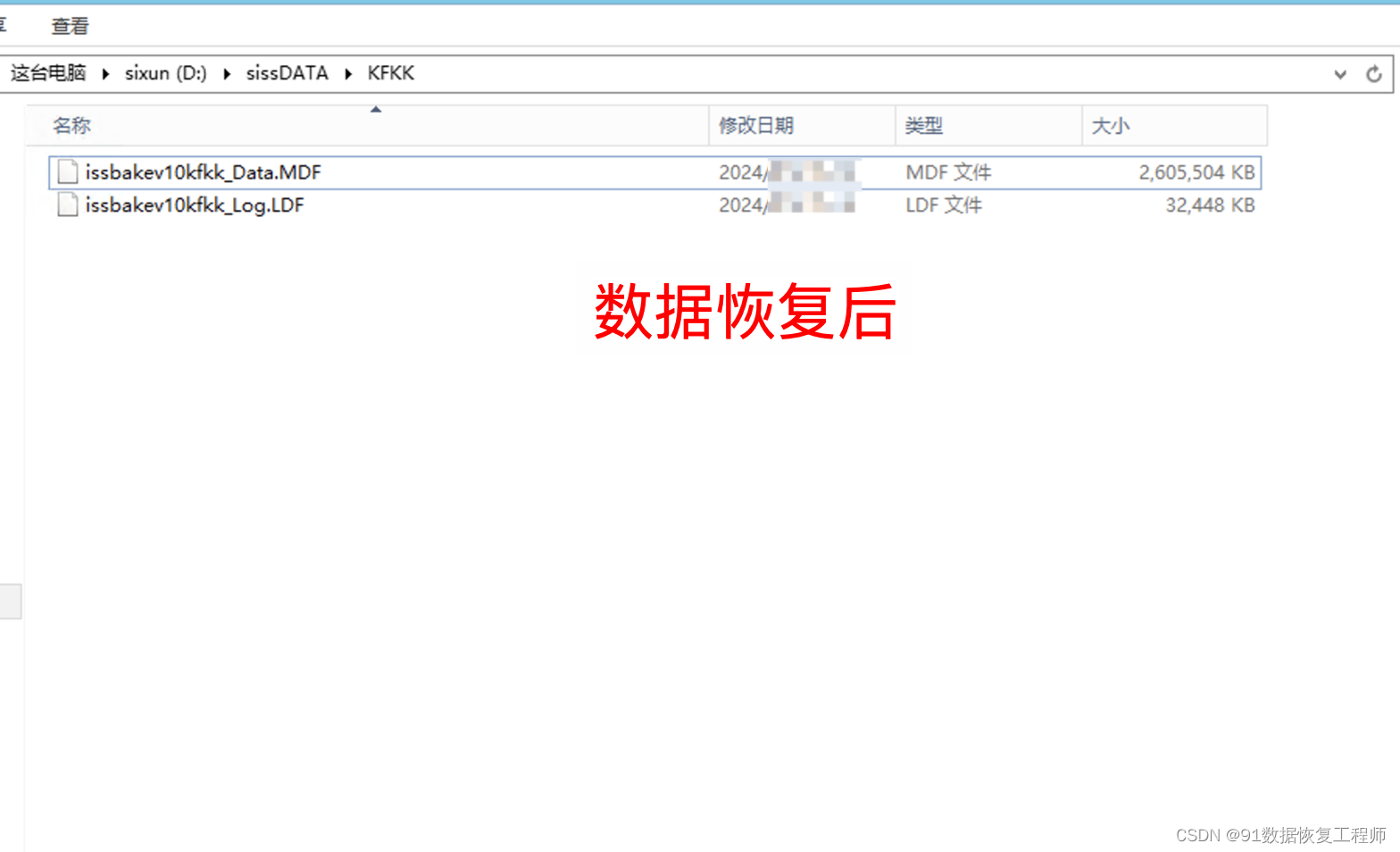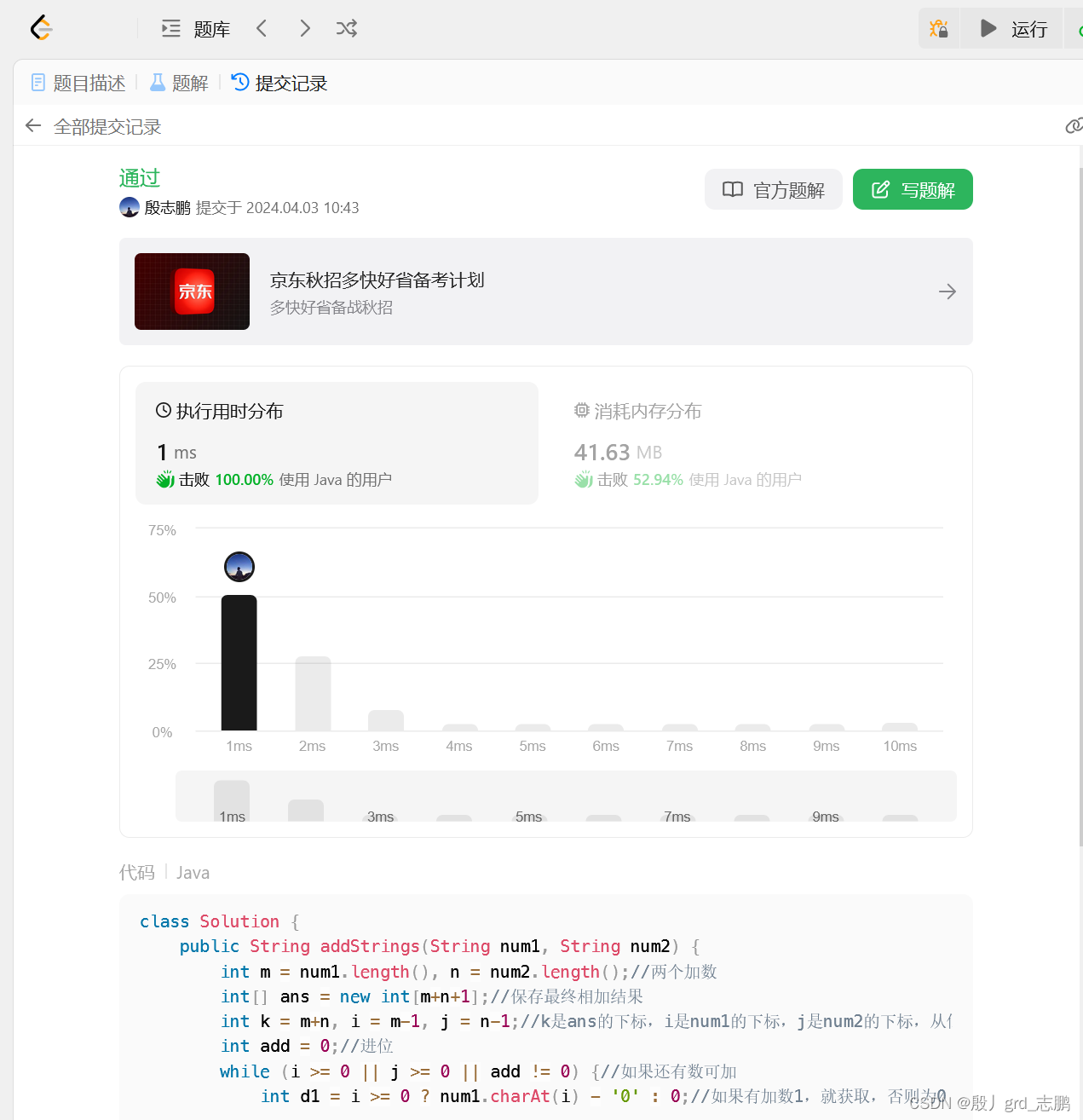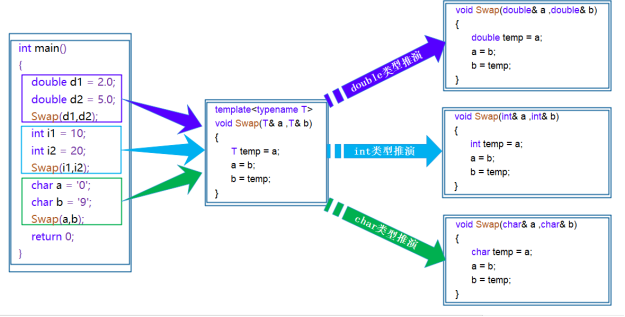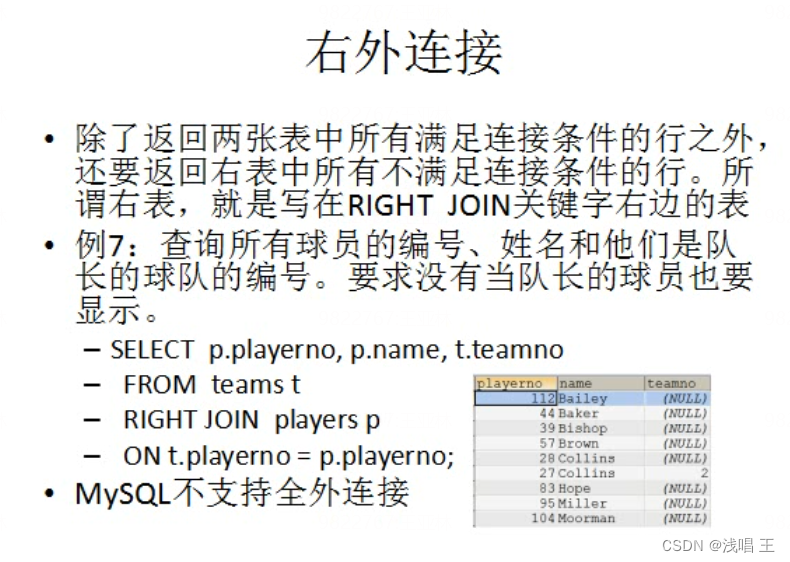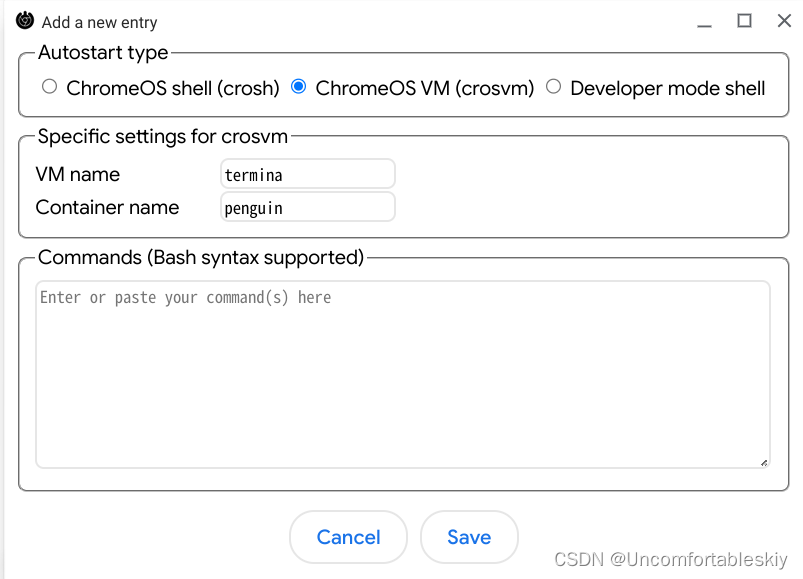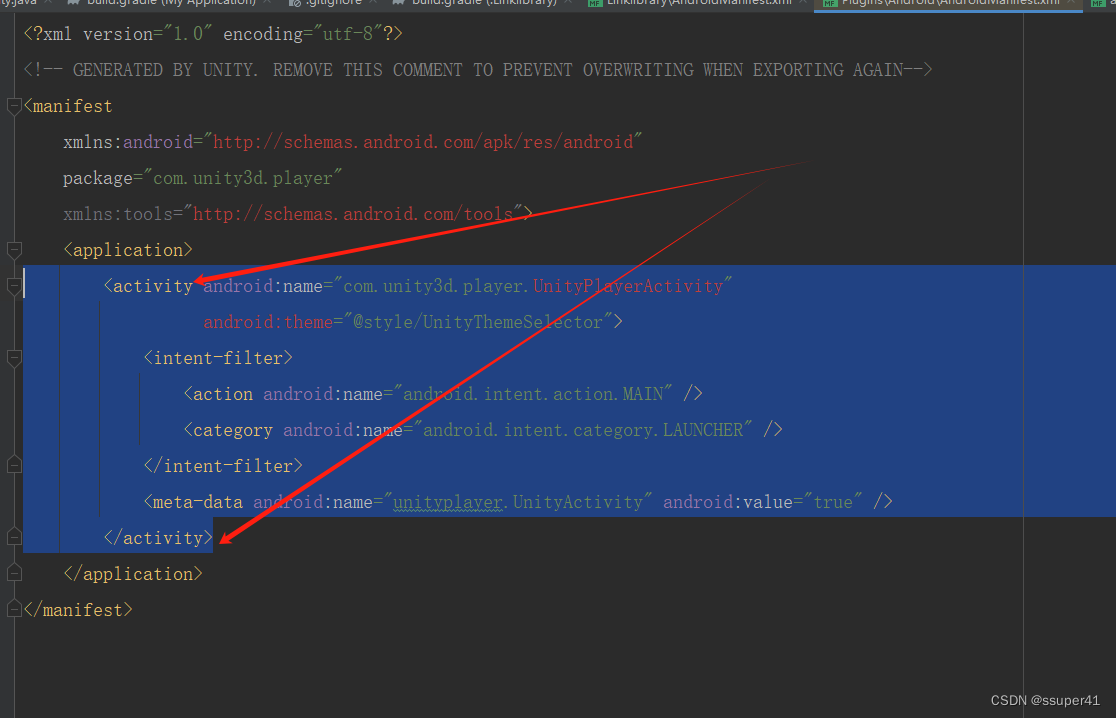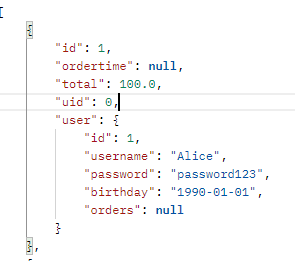1. YAML语法格式
2. kubernetes YAML 字段
3. 得力助手:help,dry-run,explain
4. vscode 工具生成和编写
5. YAML语法检查系统
YAML文件主要是编写 k8s 的一些资源的,对象(资源里面包含对象),字段等,哪些字段,字段对应的值,资源含义搞清楚。
一.YAML的语法格式
YAML(YAML Ain 't Markup Language)是一种人类可读的数据序列化,常用于配置文件和数据交换。与JSON类似,YAML以键值对的方式表示数据,但是更强调可读性和易用性,使得它在配置文件,持续集成,编排工具(如ansible,kubernetes)等领域广泛使用。
YAML他不是一种编程语言,他是一种文本的格式。编程语言分为有结尾符,语句的结尾符,有一些编程语言是没有的,比如if,有的有结尾,比如fi,python 有些他是不需要结尾的,比如file
springboot,ansible,kubernetes他们的YAML内容是不一样的,他们只是采用了YAML这种文本格式,里面的字段都是有他们自己预定义的。定义了什么字段,他就会去引用什么。所以说 kubernetes 他有自己的字段,ansible 也有他自己的字段,kubernetes的字段高达七十几种,常用的大约十几种吧!
YAML格式如下:
1)缩进表示层级关系
2)不支持制表符 "tab" 缩进,使用空格缩进
3)通常开头缩进2个空格
4)字符后缩进1个空格,如冒号,逗号等
5)"---"表示YAML格式,一个文件的开始
6)"#" 注释
calico 网络配置文件 vim /root/calico-3.27.3/manifests/calico.yaml
root@k8s-master-10:~/calico-3.27.3/manifests# cat calico.yaml
---
# Source: calico/templates/calico-kube-controllers.yaml
# This manifest creates a Pod Disruption Budget for Controller to allow K8s Cluster Autoscaler to evict
apiVersion: policy/v1
kind: PodDisruptionBudget
metadata:
name: calico-kube-controllers
namespace: kube-system
labels:
k8s-app: calico-kube-controllers
spec:
maxUnavailable: 1
selector:
matchLabels:
k8s-app: calico-kube-controllers
---
# Source: calico/templates/calico-kube-controllers.yaml
apiVersion: v1
kind: ServiceAccount
metadata:
name: calico-kube-controllers
namespace: kube-system
---
# Source: calico/templates/calico-node.yaml
apiVersion: v1
kind: ServiceAccount
metadata:
name: calico-node
namespace: kube-system
---
# Source: calico/templates/calico-node.yaml
apiVersion: v1
kind: ServiceAccount
metadata:
name: calico-cni-plugin
namespace: kube-system
---
Kubernetes YAML字段类型
POD资源配置选项
apiVersion: v1
kind: Pod
metadata:
labels:
key: value
name: ""
namespace: ""
spec:
containers:
- image: ""
imagePullPolicy: "Always|ifNotPresent|Never"
name: ""
args: []
command: []
ports: []
env: []
resources: {}
livenessProbe: {}
readinessProbe: {}
startupProbe: {}
volumeMounts: {}
securityContext: {}
lifecycle: {}
volumes: []
# springboot,ansible,kubernetes他们的YAML内容是一样的,他们只是采用了YAML这种文本格式
以上YAML语法解释:
apiVersion: v1
kind: Pod
metadata:
labels:
key: value
name: ""
namespace: ""
spec: # 资源对象的核心配置
containers:
- image: "" # 指定镜像的名称
imagePullPolicy: "Always|ifNotPresent|Never" # 指定镜像下载策略
name: ""
args: [] # 指定参数
command: [] # 执行的命令
ports: [] # 声明的端口
env: [] # 变量
resources: {} # 资源配额
livenessProbe: {} # 健康检查
readinessProbe: {}
startupProbe: {} # 指定启动检查
volumeMounts: {} # 数据卷
securityContext: {} # 安全上下文
lifecycle: {} # 回收,生命周期的句子,回调
volumes: [] # 配置管理卷的来源
编排 yaml文件,pod资源配置是修改最多的地方,已作预定义,最终都会转化为 JSON 格式提交过去。
kubernetes对属性也好,字段也好,做了预定义,已经定义了它是什么类型了,因为这些 yaml 最终都会按提交到 k8s 的 apiserver 那里,所以他最终都会转换成 JSON 提交
我们如何确定 yaml 的这些字段是[] ,还是""呢?还是他是一个什么样的意思,当你明白了这一点,这个字段你就会去写了。
字段值类型:
1.<string> : 表示一个字符串 比如 name: "k8s" 表示一个固定的值
2. <map[string]string> : 表示一个键值对的映射,其中键和值都是字符串类型。比如 标签就是这个类型 比如
labels:
key1 : value1
key2 : value2
3)<[]string> : 表示一个字符串列表,使用[]表示该字段可以包含多个字符串值,并且每个值都是独立的。比如 command: ["a","b"]
4)<Object> : 表示一个单独的对象 {}
5)<[]Object> : 表示一个对象列表。使用[]表示该字段可以包含多个对象,并且每个对象可以包含多个字符串。
因为这些 yaml 最终都会按提交到 k8s 的 apiserver 那里,所以他最终都会转换成 JSON 提交过去。
k8s对"",{},[]等已作预定义了,具体含义如下:
"" 表示的就是字符串
{} 表示一个对象
[] 表示的是字符串列表,使用[]表示该字段可以包含多个字符串值,且都是独立的。
'-' 一个横杠代表一个 Object, 比如 Containers:
表示一个单独的对象,他的父级是一个对象列表
containers: # 可以有多个容器对象,可以表示有多个容器,每个容器对象表示一个横杠
- name: calico-kube-controllers
image: docker.io/calico/kube-controllers:v3.27.3
imagePullPolicy: IfNotPresent
env:
# Choose which controllers to run.
'#'一下以'-'开头的表示一个单独的对象,而它的赋值就是对象列表
- name: ENABLED_CONTROLLERS
value: node
- name: DATASTORE_TYPE
value: kubernetes
livenessProbe:
exec:
command:
- /usr/bin/check-status
- -l
periodSeconds: 10
initialDelaySeconds: 10
failureThreshold: 6
timeoutSeconds: 10
readinessProbe:
exec:
command:
- /usr/bin/check-status
- -r
periodSeconds: 10
spec:
# The controllers can only have a single active instance.
replicas: 1
selector:
matchLabels:
k8s-app: calico-kube-controllers
strategy:
type: Recreate
template:
metadata:
name: calico-kube-controllers
namespace: kube-system
labels:
k8s-app: calico-kube-controllers
spec:
nodeSelector:
kubernetes.io/os: linux
tolerations:
# Mark the pod as a critical add-on for rescheduling.
- key: CriticalAddonsOnly
operator: Exists
- key: node-role.kubernetes.io/master
effect: NoSchedule
- key: node-role.kubernetes.io/control-plane
effect: NoSchedule
serviceAccountName: calico-kube-controllers
priorityClassName: system-cluster-critical如何去确定这些字段的类型?
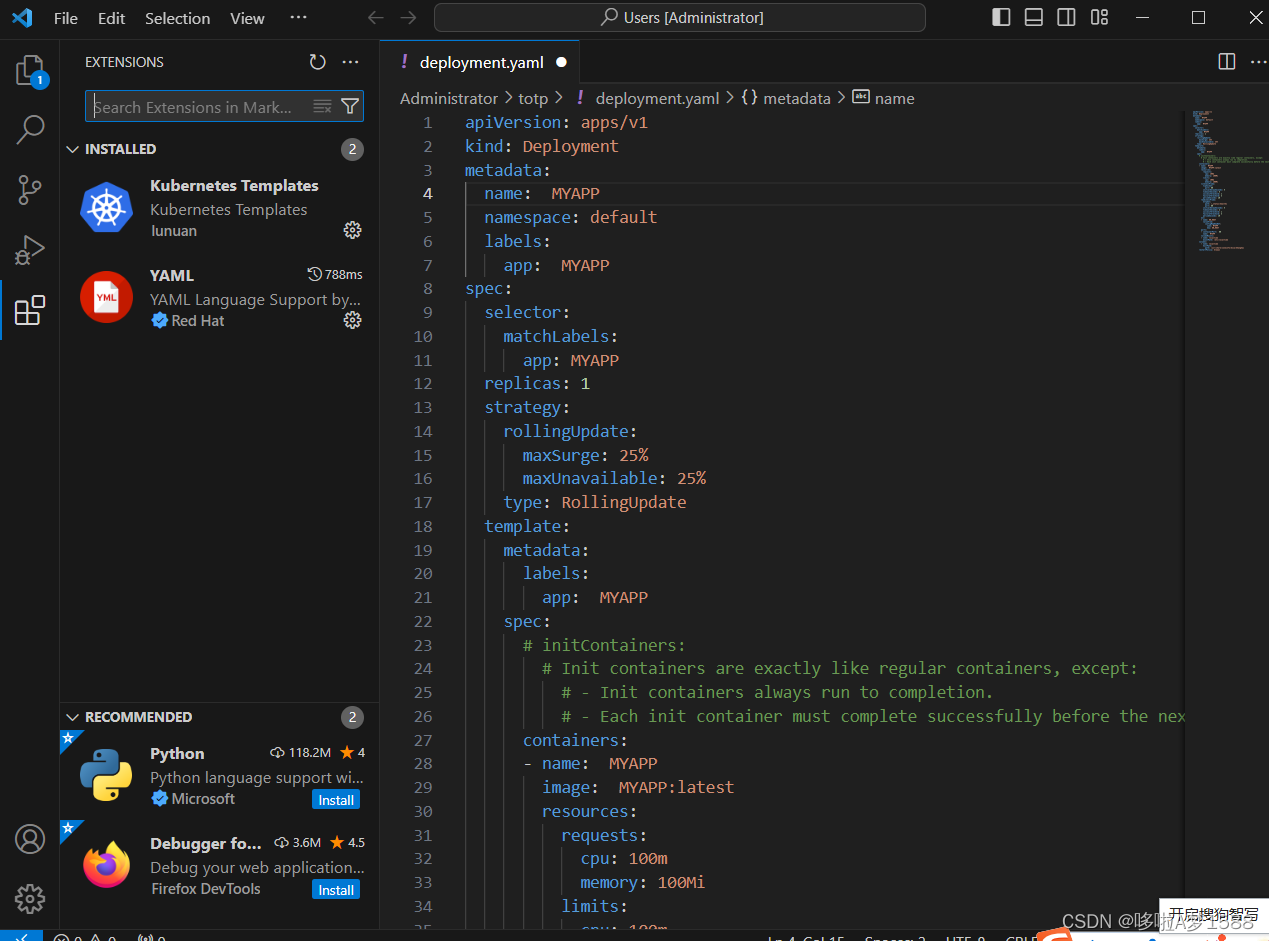
-
help: 有时候,我们可能忘记具体的命令用法或参数选项。在这种情况下,"help"命令将成为你的得力助手,为你提供清晰的指导。
-
-
dry-run: 通过使用 "dry-run" 选项,可以预先验证命令的效果。这种模拟执行命令不会对集群产生实际影响,再搭配上 -o 选项以将结果输出为 YAML 格式,能够快速地获得所需的 YAML 文件。
-
explain: 在编写 YAML 文件时,了解资源类型的结构和属性至关重要。通过 "explain" 命令,你可以轻松掌握资源的所有字段,默认值以及示例的详细信息,帮助你更好地编写 YAML 文件。
打印字段选项信息--explain
-
# 打印字段选项信息 kubectl explain --help root@k8s-master-10:~# kubectl explain pod KIND: Pod VERSION: v1 DESCRIPTION: Pod is a collection of containers that can run on a host. This resource is created by clients and scheduled onto hosts. FIELDS: apiVersion <string> APIVersion defines the versioned schema of this representation of an object. Servers should convert recognized schemas to the latest internal value, and may reject unrecognized values. More info: https://git.k8s.io/community/contributors/devel/sig-architecture/api-conventions.md#resources kind <string> Kind is a string value representing the REST resource this object represents. Servers may infer this from the endpoint the client submits requests to. Cannot be updated. In CamelCase. More info: https://git.k8s.io/community/contributors/devel/sig-architecture/api-conventions.md#types-kinds metadata <ObjectMeta> Standard object's metadata. More info: https://git.k8s.io/community/contributors/devel/sig-architecture/api-conventions.md#metadata spec <PodSpec> Specification of the desired behavior of the pod. More info: https://git.k8s.io/community/contributors/devel/sig-architecture/api-conventions.md#spec-and-status status <PodStatus> Most recently observed status of the pod. This data may not be up to date. Populated by the system. Read-only. More info: https://git.k8s.io/community/contributors/devel/sig-architecture/api-conventions.md#spec-and-status ----------------------------------------------------------------------------------- kubectl explain pod.spec.containers root@k8s-master-10:~# kubectl explain pod.spec.containers KIND: Pod VERSION: v1 FIELD: containers <[]Container> 容器字段表示是对象列表 如下的形式 [ {}, {}, {} ] # 列表嵌套对象,对象里面再嵌套列表 containers: - name: 第一个容器 - name: 第二个容器 DESCRIPTION: List of containers belonging to the pod. Containers cannot currently be added or removed. There must be at least one container in a Pod. Cannot be updated. A single application container that you want to run within a pod. FIELDS: args <[]string> # 列表字符串,有如下两种形式显示 [1,2,3] -1 -2 -3 Arguments to the entrypoint. The container image's CMD is used if this is not provided. Variable references $(VAR_NAME) are expanded using the container's environment. If a variable cannot be resolved, the reference in the input string will be unchanged. Double $$ are reduced to a single $, which allows for escaping the $(VAR_NAME) syntax: i.e. "$$(VAR_NAME)" will produce the string literal "$(VAR_NAME)". Escaped references will never be expanded, regardless of whether the variable exists or not. Cannot be updated. More info: https://kubernetes.io/docs/tasks/inject-data-application/define-command-argument-container/#running-a-command-in-a-shell command <[]string> 列表字符串 ["a","b","c"] Entrypoint array. Not executed within a shell. The container image's ENTRYPOINT is used if this is not provided. Variable references $(VAR_NAME) are expanded using the container's environment. If a variable cannot be resolved, the reference in the input string will be unchanged. Double $$ are reduced to a single $, which allows for escaping the $(VAR_NAME) syntax: i.e. "$$(VAR_NAME)" will produce the string literal "$(VAR_NAME)". Escaped references will never be expanded, regardless of whether the variable exists or not. Cannot be updated. More info: https://kubernetes.io/docs/tasks/inject-data-application/define-command-argument-container/#running-a-command-in-a-shell env <[]EnvVar> 列表变量 如下表示 env: - name: abc value: 123 - name: sde value: 456 List of environment variables to set in the container. Cannot be updated. envFrom <[]EnvFromSource> List of sources to populate environment variables in the container. The keys defined within a source must be a C_IDENTIFIER. All invalid keys will be reported as an event when the container is starting. When a key exists in multiple sources, the value associated with the last source will take precedence. Values defined by an Env with a duplicate key will take precedence. Cannot be updated. image <string> Container image name. More info: https://kubernetes.io/docs/concepts/containers/images This field is optional to allow higher level config management to default or override container images in workload controllers like Deployments and StatefulSets. imagePullPolicy <string> Image pull policy. One of Always, Never, IfNotPresent. Defaults to Always if :latest tag is specified, or IfNotPresent otherwise. Cannot be updated. More info: https://kubernetes.io/docs/concepts/containers/images#updating-images Possible enum values: - `"Always"` means that kubelet always attempts to pull the latest image. Container will fail If the pull fails. - `"IfNotPresent"` means that kubelet pulls if the image isn't present on disk. Container will fail if the image isn't present and the pull fails. - `"Never"` means that kubelet never pulls an image, but only uses a local image. Container will fail if the image isn't present lifecycle <Lifecycle> Actions that the management system should take in response to container lifecycle events. Cannot be updated. livenessProbe <Probe> Periodic probe of container liveness. Container will be restarted if the probe fails. Cannot be updated. More info: https://kubernetes.io/docs/concepts/workloads/pods/pod-lifecycle#container-probes name <string> -required- Name of the container specified as a DNS_LABEL. Each container in a pod must have a unique name (DNS_LABEL). Cannot be updated. ports <[]ContainerPort> List of ports to expose from the container. Not specifying a port here DOES NOT prevent that port from being exposed. Any port which is listening on the default "0.0.0.0" address inside a container will be accessible from the network. Modifying this array with strategic merge patch may corrupt the data. For more information See https://github.com/kubernetes/kubernetes/issues/108255. Cannot be updated. readinessProbe <Probe> 就是一个纯对象 readinessProbe: exec: command: - /bin/calico-node - -felix-ready - -bird-ready Periodic probe of container service readiness. Container will be removed from service endpoints if the probe fails. Cannot be updated. More info: https://kubernetes.io/docs/concepts/workloads/pods/pod-lifecycle#container-probes resizePolicy <[]ContainerResizePolicy> Resources resize policy for the container. resources <ResourceRequirements> Compute Resources required by this container. Cannot be updated. More info: https://kubernetes.io/docs/concepts/configuration/manage-resources-containers/ restartPolicy <string> RestartPolicy defines the restart behavior of individual containers in a pod. This field may only be set for init containers, and the only allowed value is "Always". For non-init containers or when this field is not specified, the restart behavior is defined by the Pod's restart policy and the container type. Setting the RestartPolicy as "Always" for the init container will have the following effect: this init container will be continually restarted on exit until all regular containers have terminated. Once all regular containers have completed, all init containers with restartPolicy "Always" will be shut down. This lifecycle differs from normal init containers and is often referred to as a "sidecar" container. Although this init container still starts in the init container sequence, it does not wait for the container to complete before proceeding to the next init container. Instead, the next init container starts immediately after this init container is started, or after any startupProbe has successfully completed. securityContext <SecurityContext> SecurityContext defines the security options the container should be run with. If set, the fields of SecurityContext override the equivalent fields of PodSecurityContext. More info: https://kubernetes.io/docs/tasks/configure-pod-container/security-context/ startupProbe <Probe> StartupProbe indicates that the Pod has successfully initialized. If specified, no other probes are executed until this completes successfully. If this probe fails, the Pod will be restarted, just as if the livenessProbe failed. This can be used to provide different probe parameters at the beginning of a Pod's lifecycle, when it might take a long time to load data or warm a cache, than during steady-state operation. This cannot be updated. More info: https://kubernetes.io/docs/concepts/workloads/pods/pod-lifecycle#container-probes stdin <boolean> Whether this container should allocate a buffer for stdin in the container runtime. If this is not set, reads from stdin in the container will always result in EOF. Default is false. stdinOnce <boolean> Whether the container runtime should close the stdin channel after it has been opened by a single attach. When stdin is true the stdin stream will remain open across multiple attach sessions. If stdinOnce is set to true, stdin is opened on container start, is empty until the first client attaches to stdin, and then remains open and accepts data until the client disconnects, at which time stdin is closed and remains closed until the container is restarted. If this flag is false, a container processes that reads from stdin will never receive an EOF. Default is false terminationMessagePath <string> Optional: Path at which the file to which the container's termination message will be written is mounted into the container's filesystem. Message written is intended to be brief final status, such as an assertion failure message. Will be truncated by the node if greater than 4096 bytes. The total message length across all containers will be limited to 12kb. Defaults to /dev/termination-log. Cannot be updated. terminationMessagePolicy <string> Indicate how the termination message should be populated. File will use the contents of terminationMessagePath to populate the container status message on both success and failure. FallbackToLogsOnError will use the last chunk of container log output if the termination message file is empty and the container exited with an error. The log output is limited to 2048 bytes or 80 lines, whichever is smaller. Defaults to File. Cannot be updated. Possible enum values: - `"FallbackToLogsOnError"` will read the most recent contents of the container logs for the container status message when the container exits with an error and the terminationMessagePath has no contents. - `"File"` is the default behavior and will set the container status message to the contents of the container's terminationMessagePath when the container exits. tty <boolean> Whether this container should allocate a TTY for itself, also requires 'stdin' to be true. Default is false. volumeDevices <[]VolumeDevice> volumeDevices is the list of block devices to be used by the container. volumeMounts <[]VolumeMount> Pod volumes to mount into the container's filesystem. Cannot be updated. workingDir <string> Container's working directory. If not specified, the container runtime's default will be used, which might be configured in the container image. Cannot be updated. root@k8s-master-10:~# ------------------------------------------------------------------------------------- root@k8s-master-10:~# kubectl explain pod.spec.containers.ports KIND: Pod VERSION: v1 FIELD: ports <[]ContainerPort> DESCRIPTION: List of ports to expose from the container. Not specifying a port here DOES NOT prevent that port from being exposed. Any port which is listening on the default "0.0.0.0" address inside a container will be accessible from the network. Modifying this array with strategic merge patch may corrupt the data. For more information See https://github.com/kubernetes/kubernetes/issues/108255. Cannot be updated. ContainerPort represents a network port in a single container. FIELDS: containerPort <integer> -required- Number of port to expose on the pod's IP address. This must be a valid port number, 0 < x < 65536. hostIP <string> What host IP to bind the external port to. hostPort <integer> Number of port to expose on the host. If specified, this must be a valid port number, 0 < x < 65536. If HostNetwork is specified, this must match ContainerPort. Most containers do not need this. name <string> If specified, this must be an IANA_SVC_NAME and unique within the pod. Each named port in a pod must have a unique name. Name for the port that can be referred to by services. protocol <string> Protocol for port. Must be UDP, TCP, or SCTP. Defaults to "TCP". Possible enum values: - `"SCTP"` is the SCTP protocol. - `"TCP"` is the TCP protocol. - `"UDP"` is the UDP protocol. root@k8s-master-10:~#root@k8s-master-10:~# kubectl explain --help Describe fields and structure of various resources. This command describes the fields associated with each supported API resource. Fields are identified via a simple JSONPath identifier: <type>.<fieldName>[.<fieldName>] Information about each field is retrieved from the server in OpenAPI format. Use "kubectl api-resources" for a complete list of supported resources. Examples: # Get the documentation of the resource and its fields kubectl explain pods # Get all the fields in the resource kubectl explain pods --recursive # Get the explanation for deployment in supported api versions kubectl explain deployments --api-version=apps/v1 # Get the documentation of a specific field of a resource kubectl explain pods.spec.containers # Get the documentation of resources in different format kubectl explain deployment --output=plaintext-openapiv2 Options: --api-version='': Use given api-version (group/version) of the resource. --output='plaintext': Format in which to render the schema. Valid values are: (plaintext, plaintext-openapiv2). --recursive=false: When true, print the name of all the fields recursively. Otherwise, print the available fields with their description. Usage: kubectl explain TYPE [--recursive=FALSE|TRUE] [--api-version=api-version-group] [--output=plaintext|plaintext-openapiv2] [options] Use "kubectl options" for a list of global command-line options (applies to all commands). root@k8s-master-10:~/calico-3.27.3/manifests#kubectl explain deployment.spec # 关于 deployment 资源配置参数 root@k8s-master-10:~# kubectl explain deployment.spec GROUP: apps KIND: Deployment VERSION: v1 FIELD: spec <DeploymentSpec> DESCRIPTION: Specification of the desired behavior of the Deployment. DeploymentSpec is the specification of the desired behavior of the Deployment. FIELDS: minReadySeconds <integer> Minimum number of seconds for which a newly created pod should be ready without any of its container crashing, for it to be considered available. Defaults to 0 (pod will be considered available as soon as it is ready) paused <boolean> Indicates that the deployment is paused. progressDeadlineSeconds <integer> The maximum time in seconds for a deployment to make progress before it is considered to be failed. The deployment controller will continue to process failed deployments and a condition with a ProgressDeadlineExceeded reason will be surfaced in the deployment status. Note that progress will not be estimated during the time a deployment is paused. Defaults to 600s. replicas <integer> # 定义 deployment 有几个副本 Number of desired pods. This is a pointer to distinguish between explicit zero and not specified. Defaults to 1. revisionHistoryLimit <integer> The number of old ReplicaSets to retain to allow rollback. This is a pointer to distinguish between explicit zero and not specified. Defaults to 10. selector <LabelSelector> -required- # 定义 deployment 的标签选择器 Label selector for pods. Existing ReplicaSets whose pods are selected by this will be the ones affected by this deployment. It must match the pod template's labels. strategy <DeploymentStrategy> The deployment strategy to use to replace existing pods with new ones. template <PodTemplateSpec> -required- # 定义 deployment 的 template,就是定义 pod 相关的 Template describes the pods that will be created. The only allowed template.spec.restartPolicy value is "Always". root@k8s-master-10:~#root@k8s-master-10:~# kubectl explain deployment.spec.template GROUP: apps KIND: Deployment VERSION: v1 FIELD: template <PodTemplateSpec> # 就是定义 pod 资源配置选项 # 因为 deployment 是管理 pod 的 就不用单独去定义 pod 直接生成 ---------------------------------------------- apiVersion: v1 kind: Pod metadata: labels: key: value name: "" namespace: "" spec: containers: - image: "" imagePullPolicy: "Always|ifNotPresent|Never" name: "" args: [] command: [] ports: [] env: [] resources: {} livenessProbe: {} readinessProbe: {} startupProbe: {} volumeMounts: {} securityContext: {} lifecycle: {} volumes: [] ---------------------------------------------- DESCRIPTION: Template describes the pods that will be created. The only allowed template.spec.restartPolicy value is "Always". PodTemplateSpec describes the data a pod should have when created from a template FIELDS: metadata <ObjectMeta> Standard object's metadata. More info: https://git.k8s.io/community/contributors/devel/sig-architecture/api-conventions.md#metadata spec <PodSpec> Specification of the desired behavior of the pod. More info: https://git.k8s.io/community/contributors/devel/sig-architecture/api-conventions.md#spec-and-status kubectl explain deployment.spec.template.spec root@k8s-master-10:~# kubectl explain deployment.spec.template.spec GROUP: apps KIND: Deployment VERSION: v1 FIELD: spec <PodSpec> # 此时就与容器的spec 对等了 ------------------------------ apiVersion: v1 kind: Pod metadata: labels: key: value name: "" namespace: "" spec: containers: - image: "" imagePullPolicy: "Always|ifNotPresent|Never" name: "" args: [] command: [] ports: [] env: [] resources: {} livenessProbe: {} readinessProbe: {} startupProbe: {} volumeMounts: {} securityContext: {} lifecycle: {} volumes: [] ------------------------------# 因为 deployment 管理 pod ,所以deployment与pod的 containers 字段是一模一样的 root@k8s-master-10:~# kubectl explain deployment.spec.template.spec.containers root@k8s-master-10:~# kubectl explain deployment.spec.template.spec.containers GROUP: apps KIND: Deployment VERSION: v1 FIELD: containers <[]Container> DESCRIPTION: List of containers belonging to the pod. Containers cannot currently be added or removed. There must be at least one container in a Pod. Cannot be updated. A single application container that you want to run within a pod. FIELDS: args <[]string> Arguments to the entrypoint. The container image's CMD is used if this is not provided. Variable references $(VAR_NAME) are expanded using the container's environment. If a variable cannot be resolved, the reference in the input string will be unchanged. Double $$ are reduced to a single $, which allows for escaping the $(VAR_NAME) syntax: i.e. "$$(VAR_NAME)" will produce the string literal "$(VAR_NAME)". Escaped references will never be expanded, regardless of whether the variable exists or not. Cannot be updated. More info: https://kubernetes.io/docs/tasks/inject-data-application/define-command-argument-container/#running-a-command-in-a-shell command <[]string> Entrypoint array. Not executed within a shell. The container image's ENTRYPOINT is used if this is not provided. Variable references $(VAR_NAME) are expanded using the container's environment. If a variable cannot be resolved, the reference in the input string will be unchanged. Double $$ are reduced to a single $, which allows for escaping the $(VAR_NAME) syntax: i.e. "$$(VAR_NAME)" will produce the string literal "$(VAR_NAME)". Escaped references will never be expanded, regardless of whether the variable exists or not. Cannot be updated. More info: https://kubernetes.io/docs/tasks/inject-data-application/define-command-argument-container/#running-a-command-in-a-shell env <[]EnvVar> List of environment variables to set in the container. Cannot be updated. envFrom <[]EnvFromSource> List of sources to populate environment variables in the container. The keys defined within a source must be a C_IDENTIFIER. All invalid keys will be reported as an event when the container is starting. When a key exists in multiple sources, the value associated with the last source will take precedence. Values defined by an Env with a duplicate key will take precedence. Cannot be updated. image <string> Container image name. More info: https://kubernetes.io/docs/concepts/containers/images This field is optional to allow higher level config management to default or override container images in workload controllers like Deployments and StatefulSets. imagePullPolicy <string> Image pull policy. One of Always, Never, IfNotPresent. Defaults to Always if :latest tag is specified, or IfNotPresent otherwise. Cannot be updated. More info: https://kubernetes.io/docs/concepts/containers/images#updating-images Possible enum values: - `"Always"` means that kubelet always attempts to pull the latest image. Container will fail If the pull fails. - `"IfNotPresent"` means that kubelet pulls if the image isn't present on disk. Container will fail if the image isn't present and the pull fails. - `"Never"` means that kubelet never pulls an image, but only uses a local image. Container will fail if the image isn't present lifecycle <Lifecycle> Actions that the management system should take in response to container lifecycle events. Cannot be updated. livenessProbe <Probe> Periodic probe of container liveness. Container will be restarted if the probe fails. Cannot be updated. More info: https://kubernetes.io/docs/concepts/workloads/pods/pod-lifecycle#container-probes name <string> -required- Name of the container specified as a DNS_LABEL. Each container in a pod must have a unique name (DNS_LABEL). Cannot be updated. ports <[]ContainerPort> List of ports to expose from the container. Not specifying a port here DOES NOT prevent that port from being exposed. Any port which is listening on the default "0.0.0.0" address inside a container will be accessible from the network. Modifying this array with strategic merge patch may corrupt the data. For more information See https://github.com/kubernetes/kubernetes/issues/108255. Cannot be updated. readinessProbe <Probe> Periodic probe of container service readiness. Container will be removed from service endpoints if the probe fails. Cannot be updated. More info: https://kubernetes.io/docs/concepts/workloads/pods/pod-lifecycle#container-probes resizePolicy <[]ContainerResizePolicy> Resources resize policy for the container. resources <ResourceRequirements> Compute Resources required by this container. Cannot be updated. More info: https://kubernetes.io/docs/concepts/configuration/manage-resources-containers/ restartPolicy <string> RestartPolicy defines the restart behavior of individual containers in a pod. This field may only be set for init containers, and the only allowed value is "Always". For non-init containers or when this field is not specified, the restart behavior is defined by the Pod's restart policy and the container type. Setting the RestartPolicy as "Always" for the init container will have the following effect: this init container will be continually restarted on exit until all regular containers have terminated. Once all regular containers have completed, all init containers with restartPolicy "Always" will be shut down. This lifecycle differs from normal init containers and is often referred to as a "sidecar" container. Although this init container still starts in the init container sequence, it does not wait for the container to complete before proceeding to the next init container. Instead, the next init container starts immediately after this init container is started, or after any startupProbe has successfully completed. securityContext <SecurityContext> SecurityContext defines the security options the container should be run with. If set, the fields of SecurityContext override the equivalent fields of PodSecurityContext. More info: https://kubernetes.io/docs/tasks/configure-pod-container/security-context/ startupProbe <Probe> StartupProbe indicates that the Pod has successfully initialized. If specified, no other probes are executed until this completes successfully. If this probe fails, the Pod will be restarted, just as if the livenessProbe failed. This can be used to provide different probe parameters at the beginning of a Pod's lifecycle, when it might take a long time to load data or warm a cache, than during steady-state operation. This cannot be updated. More info: https://kubernetes.io/docs/concepts/workloads/pods/pod-lifecycle#container-probes stdin <boolean> Whether this container should allocate a buffer for stdin in the container runtime. If this is not set, reads from stdin in the container will always result in EOF. Default is false. stdinOnce <boolean> Whether the container runtime should close the stdin channel after it has been opened by a single attach. When stdin is true the stdin stream will remain open across multiple attach sessions. If stdinOnce is set to true, stdin is opened on container start, is empty until the first client attaches to stdin, and then remains open and accepts data until the client disconnects, at which time stdin is closed and remains closed until the container is restarted. If this flag is false, a container processes that reads from stdin will never receive an EOF. Default is false terminationMessagePath <string> Optional: Path at which the file to which the container's termination message will be written is mounted into the container's filesystem. Message written is intended to be brief final status, such as an assertion failure message. Will be truncated by the node if greater than 4096 bytes. The total message length across all containers will be limited to 12kb. Defaults to /dev/termination-log. Cannot be updated. terminationMessagePolicy <string> Indicate how the termination message should be populated. File will use the contents of terminationMessagePath to populate the container status message on both success and failure. FallbackToLogsOnError will use the last chunk of container log output if the termination message file is empty and the container exited with an error. The log output is limited to 2048 bytes or 80 lines, whichever is smaller. Defaults to File. Cannot be updated. Possible enum values: - `"FallbackToLogsOnError"` will read the most recent contents of the container logs for the container status message when the container exits with an error and the terminationMessagePath has no contents. - `"File"` is the default behavior and will set the container status message to the contents of the container's terminationMessagePath when the container exits. tty <boolean> Whether this container should allocate a TTY for itself, also requires 'stdin' to be true. Default is false. volumeDevices <[]VolumeDevice> volumeDevices is the list of block devices to be used by the container. volumeMounts <[]VolumeMount> Pod volumes to mount into the container's filesystem. Cannot be updated. workingDir <string> Container's working directory. If not specified, the container runtime's default will be used, which might be configured in the container image. Cannot be updated. root@k8s-master-10:~#如何查看参数?如何使用 help?
-
kubectl create deployment --help root@k8s-master-10:~# kubectl create deployment --help Create a deployment with the specified name. Aliases: deployment, deploy Examples: # Create a deployment named my-dep that runs the busybox image kubectl create deployment my-dep --image=busybox # Create a deployment with a command kubectl create deployment my-dep --image=busybox -- date # Create a deployment named my-dep that runs the nginx image with 3 replicas kubectl create deployment my-dep --image=nginx --replicas=3 # Create a deployment named my-dep that runs the busybox image and expose port 5701 kubectl create deployment my-dep --image=busybox --port=5701 Options: --allow-missing-template-keys=true: If true, ignore any errors in templates when a field or map key is missing in the template. Only applies to golang and jsonpath output formats. --dry-run='none': Must be "none", "server", or "client". If client strategy, only print the object that would be sent, without sending it. If server strategy, submit server-side request without persisting the resource. --field-manager='kubectl-create': Name of the manager used to track field ownership. --image=[]: Image names to run. -o, --output='': Output format. One of: (json, yaml, name, go-template, go-template-file, template, templatefile, jsonpath, jsonpath-as-json, jsonpath-file). --port=-1: The port that this container exposes. -r, --replicas=1: Number of replicas to create. Default is 1. --save-config=false: If true, the configuration of current object will be saved in its annotation. Otherwise, the annotation will be unchanged. This flag is useful when you want to perform kubectl apply on this object in the future. --show-managed-fields=false: If true, keep the managedFields when printing objects in JSON or YAML format. --template='': Template string or path to template file to use when -o=go-template, -o=go-template-file. The template format is golang templates [http://golang.org/pkg/text/template/#pkg-overview]. --validate='strict': Must be one of: strict (or true), warn, ignore (or false). "true" or "strict" will use a schema to validate the input and fail the request if invalid. It will perform server side validation if ServerSideFieldValidation is enabled on the api-server, but will fall back to less reliable client-side validation if not. "warn" will warn about unknown or duplicate fields without blocking the request if server-side field validation is enabled on the API server, and behave as "ignore" otherwise. "false" or "ignore" will not perform any schema validation, silently dropping any unknown or duplicate fields. Usage: kubectl create deployment NAME --image=image -- [COMMAND] [args...] [options] Use "kubectl options" for a list of global command-line options (applies to all commands). root@k8s-master-10:~#如何快速获取所需的 YAML 文件
dry-run 可以快速获取所需的 YAML 文件
-
kubectl create deployment web666 --image=nginx --replicas=3 -n test --dry-run=client/server 通常我们使用 client 通常我们会用这个命令帮我们导出一个 YAML 文件,通过 yaml 文件部署我们复杂的应用 'web666' : 生成一个'deployment'应用名称 web666 '--image=nginx' : 指定镜像名称 '--replicas=3' : 指定副本数 '-n': 指定命名空间 '-o' :可以输出指定的yaml格式,能够快速获取所需的 YAML 文件 '--dry-run' 有两个参数 一个是 client(--dry-run=client) 一个是 server(--dry-run=server) 他是尝试运行,并不实际运行,可以作测试,你是在 client 去验证这个命令还是在 server 层面去验证这个命令,dry-run 内置效验这种能力。通常情况下使用 client # 执行这条命令是不会输出任何东西的 kubectl create deployment web666 --image=nginx --replicas=3 -n test --dry-run=client # 增加一个'-o'参数,就可以输出 YAML 文件 kubectl create deployment web666 --image=nginx --replicas=3 -n test --dry-run=client -o yaml # '> deployment.yaml' 该参数是将生成的 yaml 文件 导出到 'deployment.yaml'中 3. root@k8s-master-10:~# kubectl create deployment web666 --image=nginx --replicas=3 -n test --dry-run=client -o yaml > deployment.yaml root@k8s-master-10:~# 1. root@k8s-master-10:~# kubectl create deployment web666 --image=nginx --replicas=3 -n test --dry-run=client deployment.apps/web666 created (dry run) 2. root@k8s-master-10:~# kubectl create deployment web666 --image=nginx --replicas=3 -n test --dry-run=client -o yaml apiVersion: apps/v1 kind: Deployment metadata: creationTimestamp: null labels: app: web666 name: web666 namespace: test spec: replicas: 3 selector: matchLabels: app: web666 strategy: {} template: metadata: creationTimestamp: null labels: app: web666 spec: containers: - image: nginx name: nginx resources: {} status: {} root@k8s-master-10:~#VSCode工具生成和编写
VSCode安装扩展:
-
Kubernetes-Templates: 帮助你轻松地编辑和管理 Kubernetes YAML文件
-
YAML: 提供 YAML 的语法高亮,格式化和验证。
如图所示已经安装好 kubernetes-Templates 和 YAML 插件
我们在 vscode 中新创建一个空白的 yaml 文件,在 编辑器 里面的 yaml 文件区域输入 k8s 会出现如下图所示
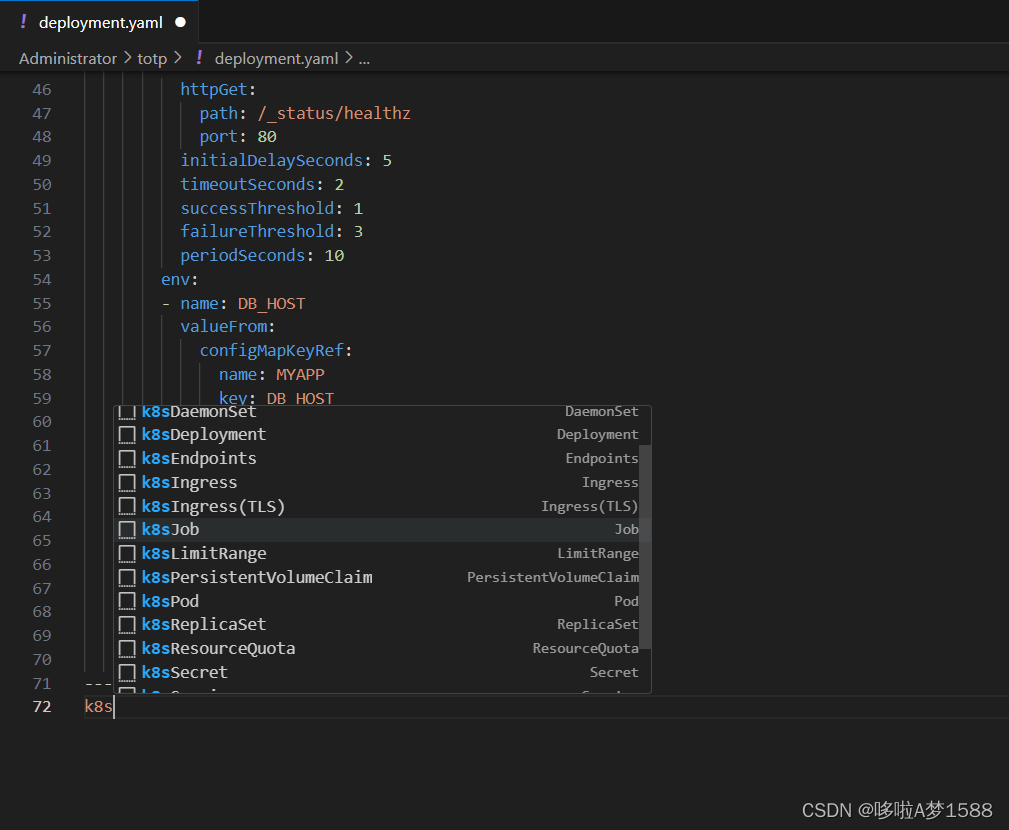
我们可以选择我们需要生成的 yaml 文件 比如我们选择'k8sjob' 回车,得到如下 yaml 文件
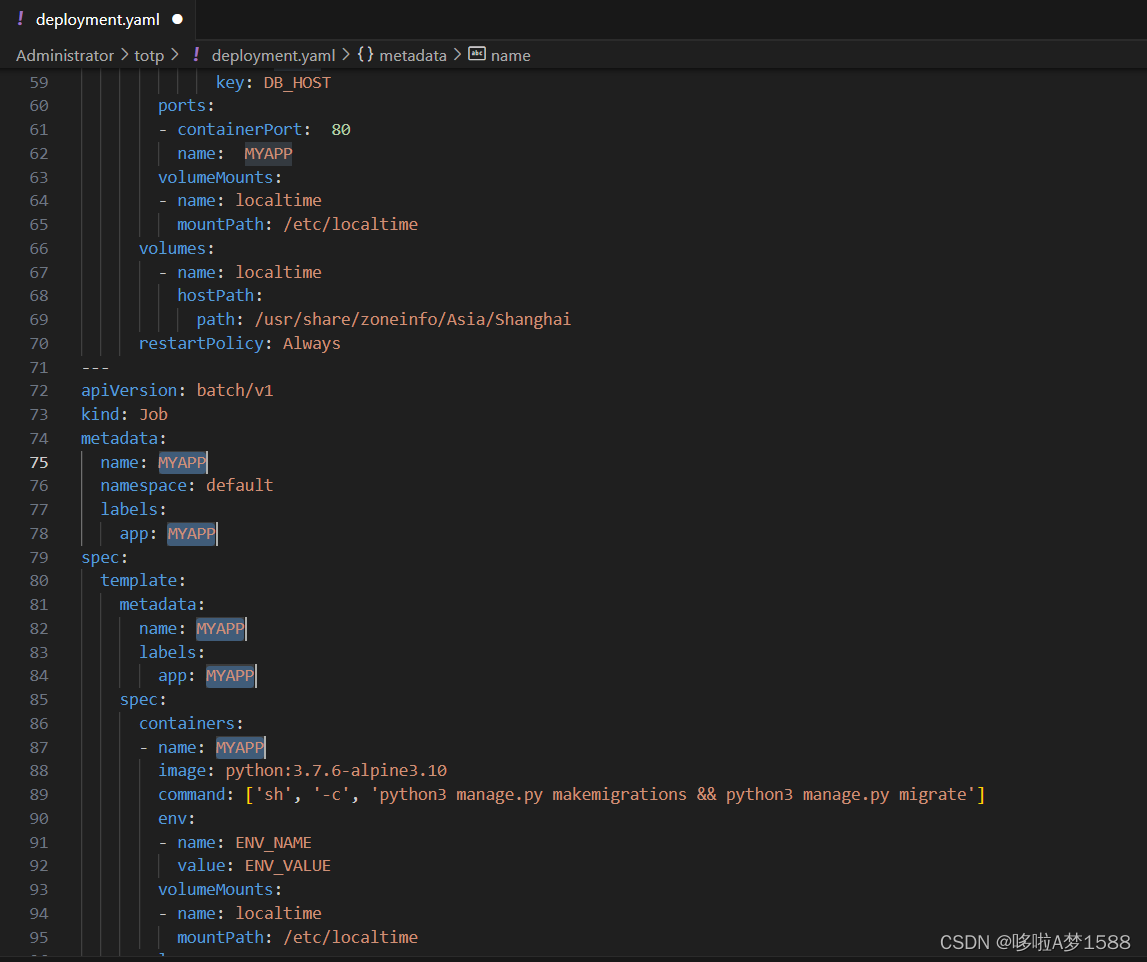
然后我们在修改相应的名称,标签,一些数据等,改成我们需要的参数就可以,这样 yaml 文件编写就非常轻松了。其实本质就是代码补全命令。
YAML语法检查系统
YAML 语法检查网址:YAML Validator Online to validate YAML data

输入自己写的 yaml 文件,工具自动检查出哪里有错误,如下图粉红色提示的内容有错误
